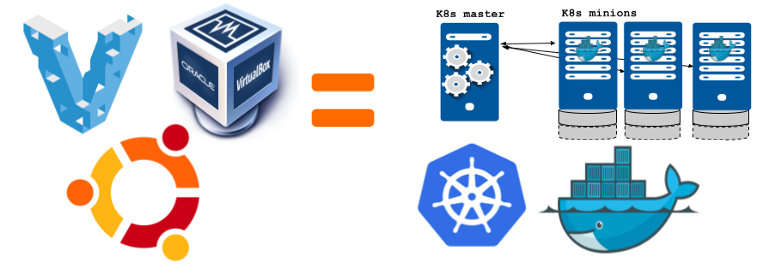How install latest minukube on ubuntu 16.04 with docker-machine-driver-kvm2
Install kvm packages on ubuntu 16.04
sudo apt install libvirt-bin qemu-kvm -y sudo usermod -a -G libvirtd $(whoami)
Install minikube
# The command below installs Kubectl version 1.9.0 curl -LO https://storage.googleapis.com/kubernetes-release/release/v1.9.0/bin/linux/amd64/kubectl # For stable version, use following command: curl -LO https://storage.googleapis.com/kubernetes-release/release/$(curl -s https://storage.googleapis.com/kubernetes-release/release/stable.txt)/bin/linux/amd64/kubectl curl -LO https://storage.googleapis.com/minikube/releases/latest/docker-machine-driver-kvm2 && chmod +x docker-machine-driver-kvm2 && sudo mv docker-machine-driver-kvm2 /usr/bin/ curl -Lo minikube https://storage.googleapis.com/minikube/releases/v0.25.0/minikube-linux-amd64 && chmod +x minikube && sudo mv minikube /usr/local/bin/ virsh net-autostart default virsh net-start default minikube version
Start minukube
minikube start --vm-driver kvm2
Starting local Kubernetes v1.9.0 cluster... Starting VM... Getting VM IP address... Moving files into cluster... Downloading localkube binary 162.41 MB / 162.41 MB [============================================] 100.00% 0s 0 B / 65 B [----------------------------------------------------------] 0.00% 65 B / 65 B [======================================================] 100.00% 0sSetting up certs... Connecting to cluster... Setting up kubeconfig... Starting cluster components... Kubectl is now configured to use the cluster. Loading cached images from config file.
Run test service
kubectl run hello-minikube --image=k8s.gcr.io/echoserver:1.4 --port=8080
deployment "hello-minikube" created
kubectl expose deployment hello-minikube --type=NodePort
service "hello-minikube" exposed # We have now launched an echoserver pod but we have to wait until the pod is up before curling/accessing it # via the exposed service. # To check whether the pod is up and running we can use the following:
kubectl get pod
NAME READY STATUS RESTARTS AGE hello-minikube-3383150820-vctvh 1/1 ContainerCreating 0 3s # We can see that the pod is still being created from the ContainerCreating status
kubectl get pod
NAME READY STATUS RESTARTS AGE hello-minikube-3383150820-vctvh 1/1 Running 0 13s # We can see that the pod is now Running and we will now be able to curl it:
curl $(minikube service hello-minikube --url)
CLIENT VALUES: client_address=192.168.99.1 command=GET real path=/
Delete deployment
kubectl delete deployment hello-minikube
deployment "hello-minikube" deleted
Stop minicube
minikube stop
